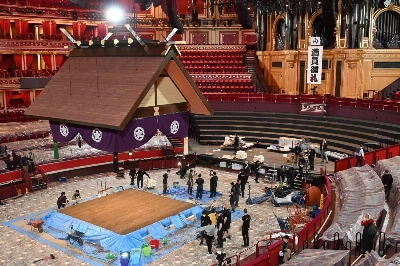In the first move of its kind in Japan, Tokyo has drawn up guidelines aimed at preserving the area around buildings and other structures that have been designated historically significant.
The guidelines, which were set last week by the metropolitan government, call on developers to consider the size and placement of new structures they erect near these sites so they don't infringe on the general view, officials said.
According to the guidelines, developers are urged to avoid severe contrasts in size and color when removing or adding greenery and renovating or building within a distance of 100 meters of historical sites.
While similar measures are not unusual in the United States and Europe, they are unheard of in Japan.
The guidelines will be explained when developers request confirmation of their projects from the metropolitan government, officials said.
Under a 1997 ordinance, the Tokyo Metropolitan Government has been selecting sites it wants to designate as historically significant.
So far, the list includes 43 structures, including the flagship store of department store chain Mitsukoshi Ltd. in the Nihonbashi district of Chuo Ward and Kachidoki Bridge on the Sumida River near the Tsukiji Market, also in the ward.
In addition, 11 parks and edifices that have been designated important cultural assets by the central government or the metropolitan government, such as Rikugien park in Bunkyo Ward and the main building of the Bank of Japan's head office in Chuo Ward, will also be affected by the new guidelines.
Officials at the Bureau of Citizen's and Cultural Affairs said they hope the new guidelines will encourage efforts on the part of the metropolitan government to produce a landscape that is unique to Tokyo through the preservation and utilization of sites that have historical and cultural value.

















With your current subscription plan you can comment on stories. However, before writing your first comment, please create a display name in the Profile section of your subscriber account page.